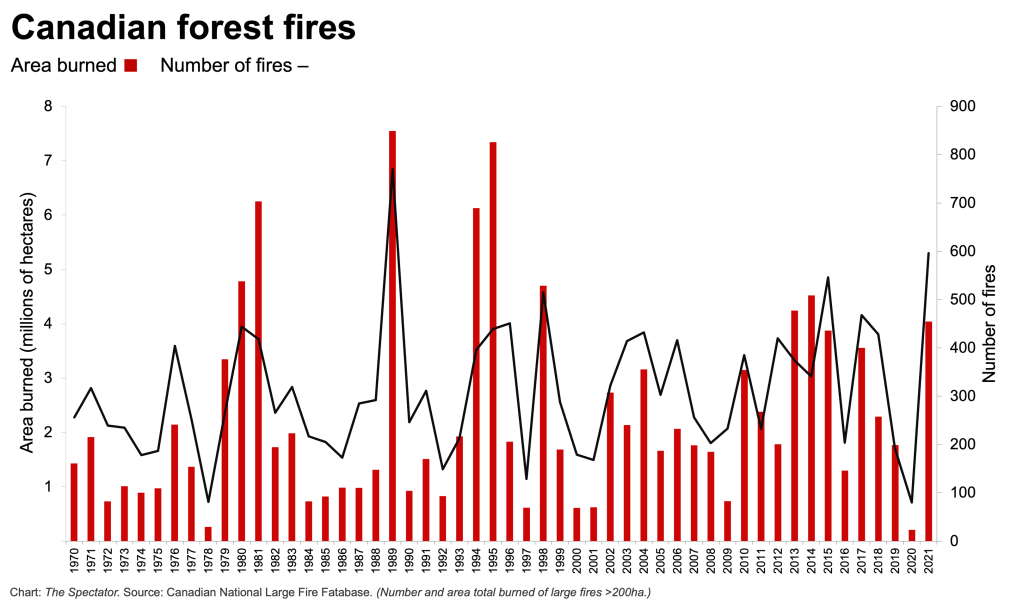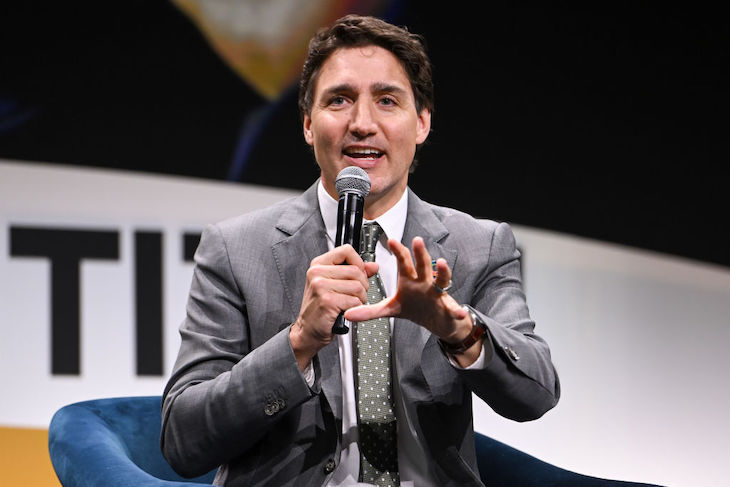Planes grounded in New York, people told to stay indoors – and an actress forced to leave the stage on Broadway because of the smoke. Canada is ‘on fire’ and New York is choking from the drifting smoke – and it is all the result of man-made climate change. We know this because Justin Trudeau and other have told us so.
‘We’re seeing more and more of these fires because of climate change,’ tweeted Trudeau this week, ‘We’ll keep working – here at home and with partners around the world – to tackle climate change and address its impacts.’
US vice president Kamala Harris added her ha’porth of wisdom of wisdom by tweeting: ‘Millions of people are experiencing dangerous air quality due to wildfires across Canada, which are intensifying because of the climate crisis.’
The real world data doesn’t support the catastrophist narrative
Just the one problem. As is so often the case when it comes to extreme weather, the real world data doesn’t support the catastrophist narrative. Trudeau should have consulted his own government’s national fire database before spouting forth. There he would have seen that actually there has been a general downward trend in the number of wildland fires in the past 40 years. The database also records a metric relating to the total area of Canada burned in wildfires each year. This offers a less obvious trend. The ‘best’ years (i.e. smallest area burned) seem to be getting a bit worse, while the ‘worst’ years are seeing fewer hectares burned. The six worst years of the past four decades all occurred in the first half of that period.

Wildland fires are a mixture of several factors, of which the weather is just one. The Canadian Wildland Fire Information System also holds records for ‘fire weather’ (a combination of dryness and temperature), which show that the conditions this years are unusually bad for so early in the season, especially in British Columbia and Alberta. But how many fires get set depends on sources of ignition, and the size of those fires depends on the amount of vegetation there is to be burned, as well as on how keen and how effective fire-fighters are at attacking the blazes.
One of the factors in the growth of devastating wildfires on the west coast of the US in recent years has been a dearth of fires for much of the past century. Greater firefighting skills resulted in the swift extinguishing of wildfires, which have always been part of the natural ecological cycle. That led to a growth in the amount of deadwood on forest floors – so that when fires did take hold there was more fuel for them to burn. Canada, too, has been criticised for over-controlling fires. Mark Heathcott, who formerly ran Parks Canada for two decades, has criticised the lack of controlled burning in recent years.
As for the issue of ignition sources, it is notable that the year with the fewest wildland fires and the smallest area burned of all the past 40 years was 2020 – a year when, thanks to the pandemic, there were fewer people out and about, holding barbecues in the woods and such like. It is little wonder that 2021 was an especially bad year for fires, when, as well as hot, dry weather in British Columbia, life returned a little more to normal and areas which might have burned in 2020 burned in 2021 instead.
None of this entirely absolves climate change from a role in wildland fires. In the case of the US west coast, the fire season has been lengthening, with fires now occurring later in the autumn. But no, we have not suddenly entered a hellish inferno thanks to man-made climate change. Justin Trudeau should check his own government data before spouting forth in future.







Comments